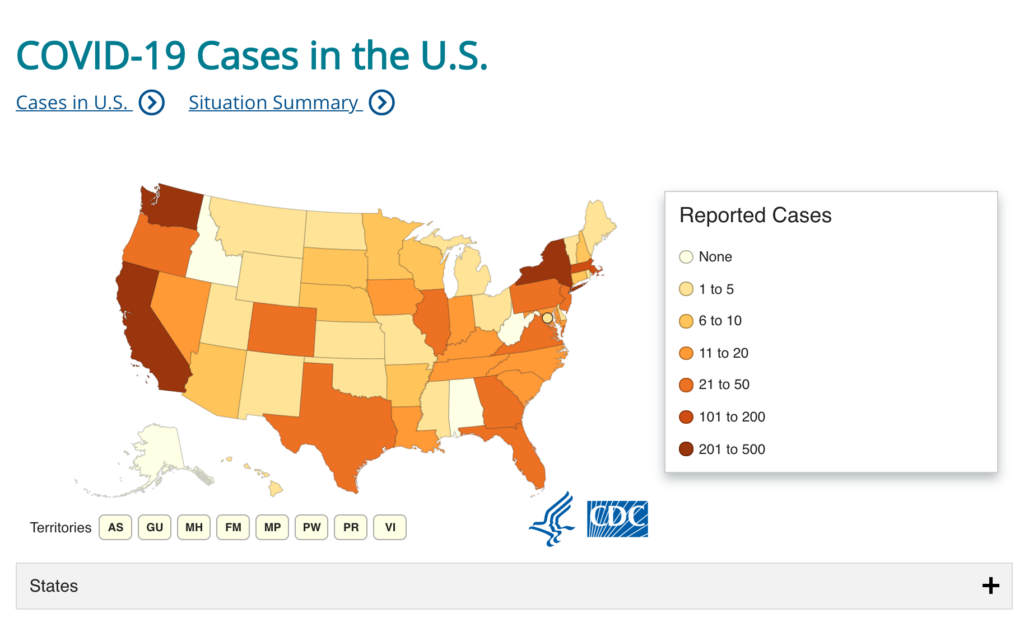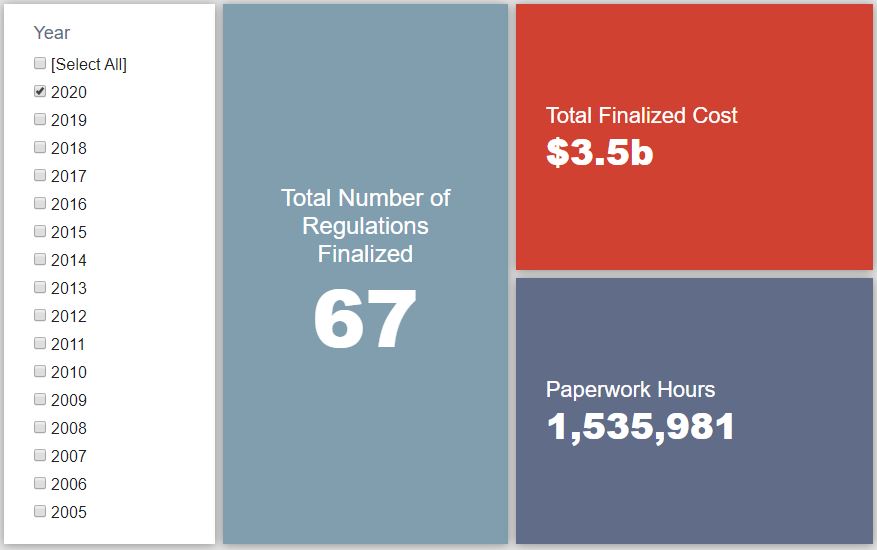Week in Regulation
March 16, 2020
Regulation in the Age of the Coronavirus
In the midst of a week where the spread of COVID-19 took over the health and economic concerns of the nation, it is difficult to find much in the regular flow of regulations that comes anywhere close to the novel virus’s impact. While there were a couple of notable rules that, on net, ticked the regulatory budget nominally to the cost side, federal agencies’ ongoing response to this disease has (rightfully) taken precedence. Across all rulemakings, agencies published $229 million in total net costs and added 163,083 hours of annual paperwork.
REGULATORY TOPLINES
- 2020 Proposed Rules: 35
- 2020 Final Rules: 62
- 2020 Total Pages: 14,710
- 2020 Final Rule Costs: $3.5 billion
- 2020 Proposed Rule Costs: $3.6 billion
TRACKING THE REGULATORY BUDGET
The most significant rule of the week came from the Department of Labor (DOL). DOL’s rule seeks “to rapidly increase the availability of high-quality apprenticeship programs in sectors where apprenticeship opportunities are not widespread.” It establishes a framework under which certain entities can become credentialed in the task of setting up apprenticeship programs in areas that currently lack them. While its intention is to open up greater economic opportunities through this program, it is a regulatory action for the purposes of the fiscal year (FY) 2020 regulatory budget as it introduces new administrative requirements for participating entities. DOL estimates that the rule’s requirements bring $34 million in annualized costs (or more than $550 million in present value).
The most significant deregulatory action of the week comes from the Environmental Protection Agency (EPA). EPA’s rule regarding “Protection of Stratospheric Ozone: Revisions to the Refrigerant Management Program’s Extension to Substitutes” would dial back some of the requirements of a 2016 rule on the subject. According to the agency, these adjustments come in light of “changes to the legal interpretation that supported that 2016 rule,” and bring annualized savings of approximately $24 million (or $344 million in present value).
The Trump Administration expects to reach $51.6 billion in cumulative net savings in FY 2020. To date in the fiscal year, agencies have finalized 65 deregulatory actions and 20 regulatory actions, totaling $2.5 billion in quantified total net costs.
THIS WEEK’S REGULATORY PICTURE
This week, federal agencies introduce measures to ease regulatory requirements in the wake of COVID-19.

CDC Map of COVID-19 cases by state as of March 16
As it becomes clearer that slowing the spread of the coronavirus will require a large federal government response, several agencies took steps this week to waive certain requirements or expedite internal processes in an effort to help.
The EPA announced that it would expedite review of claims that disinfectants are effective against certain viral pathogens, for already registered disinfectants that do not require the submission of new efficacy data. This action will help product manufacturers be able to indicate on their labels that a product is effective against SARS-CoV-2, which causes COVID-19.
Meanwhile, the Federal Aviation Administration (FAA) waived rules that require airlines with coveted gate slots at congested airports to use those slots at least 80 percent of the time or forfeit them. As people fly less due to the coronavirus, airlines are incentivized to fly empty or nearly empty planes into these major airports so that they do not lose their gate slots. The FAA will credit airlines for flights that are canceled due to the coronavirus until May 31.
Similarly, the Food and Nutrition Service (FNS), which oversees the school lunch program, is also waiving a requirement. FNS currently allows schools to provide free meals to students when schools unexpectedly close. The problem is that the rule requires schools to hold those meals in a group setting – a potential hazard during the current crisis. FNS is waiving the group setting requirement to comport with social distancing protocols needed to help slow the spread of the coronavirus.
The actions here come amidst news reports that regulatory barriers inhibited the accelerated use of testing for possible cases of COVID-19 as far back as January.
TOTAL BURDENS
Since January 1, the federal government has published $7.1 billion in total net costs (with $3.5 billion in finalized costs) and 14.5 million hours of net annual paperwork burden increases (with 1.5 million hours due to final rules). Click here for the latest Reg Rodeo findings.












